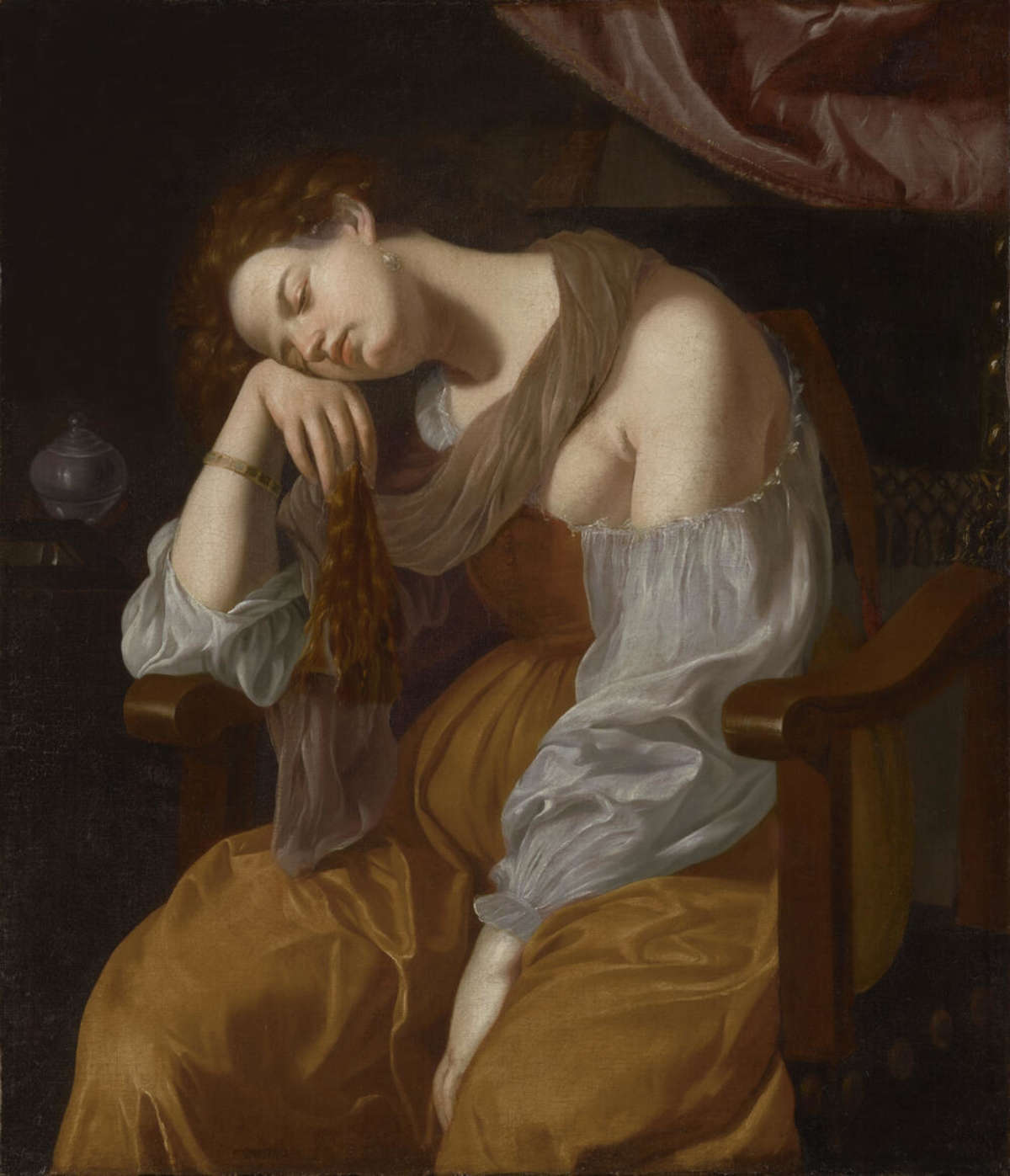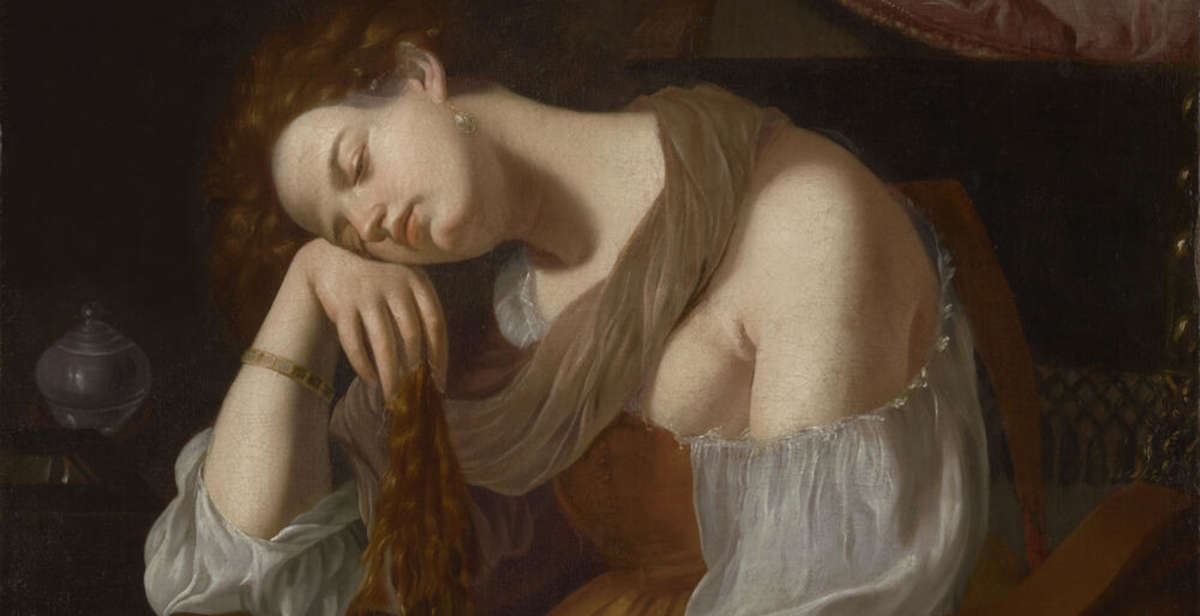Scholars have been searching for it for years; it had long been given up for lost. Now, however, there is a museum in Texas that believes it has resurfaced a lost masterpiece by Artemisia Gentileschi (Rome, 1593 - Naples, post-1642). We’re talking about the Penitent Magdalene painted around 1625-1626, a work that has been in private hands since the time of its creation and has now been acquired by the Kimbell Art Museum in Fort Worth, USA. The work can already be seen, as of last Sept. 5, in the section of the museum that exhibits other masterpieces of early 17th-century Italian painting, such as Caravaggio’s The Bari (c. 1595) or Guercino’s Christ and the Samaritan Woman (c. 1619-1620).
The work was purchased, and possibly even commissioned, by Fernando Enríquez Afán de Ribera, third duke of Alcalá and viceroy of Naples, during the period when he held the post of Spanish ambassador to Rome (1625-26). There are at least two 18th-century sources that describe the duke as commissioning Artemisia, and in the inventories of his collection, the work is described as “Una Mag.na sentada en una silla durmiendo sobre el braço de artemissa Gentileça romana.” The painting was then exhibited in his residence, the Casa de Pilatos, in Seville, where, according to 17th-century Spanish sources, it became famous and was widely copied. Indeed, among the most important copies is the one in Seville Cathedral , which has always been the reference point for learning about this otherwise unknown painting, except from other copies (such as the one in the Soumaya Museum in Mexico City). Later, after the death of the Duke of Alcalá, the painting remained in the possession of his heirs in Seville until it disappeared altogether, before reappearing at auction at Tajan’s in 2001 in France (where it was sold as a work from the workshop of Artemisia Gentileschi). It was then sold to a private collection and remained there until it was purchased by Adam Williams Fine Art Ltd. of New York, on behalf of the Kimbell, in 2024.

Identifying the work as the original, from which all other versions were derived, had been, in 2021, scholar Jesse M. Locker, in an article published in the journal Apollo. The canvas, Locker wrote at the time, “can be confidently identified as the original work” by Artemisia Gentileschi. “After some research,” the scholar argued, “I discovered that the unpublished painting I had found a reference to was in an American private collection. A few months ago I had the opportunity to examine this painting in person, accompanied by Sheila Barker, one of the foremost authorities on Artemisia Gentileschi. We went to see it with cautious optimism that it might be the original (but also well aware of the many copies in circulation). But the painting far exceeded our expectations. In every respect, it is clearer, brighter, more legible, and better painted than the other versions, and shows a subtlety of light and color, and a masterful depiction of flesh and tissue, that is consistent with the artist at the height of his powers. Moreover, ambiguous, awkward or illogical details in the copies are resolved and clarified in this version.”
When it was sold by Tajan, the painting was dirty and poorly legible due to clumsy repainting, but this was superficial and thus easily removed after purchase, revealing a high-quality work with several elements that, according to Locker, would indicate its authorship. For example, the subtle play of light and shadow on the Magdalene’s neck, with the shadows are punctuated by reflected light that highlights the contours of her neck, throat and chin, or the way the lace is treated, which bends and curves at irregular intervals, and then again the depiction of the drapery with its neatly constructed and deliberately varied shadows and lights, reminiscent of the dress of Judith in the painting preserved at the Detroit Institute of Arts, often taken as a reference point for dating this Magdalene. Certain elements of the painting are also much more legible: for example, the still life on the table next to the Magdalene, which in the other versions features dark objects that are difficult to read and can only be understood contextually if one is already familiar with the iconography of the Magdalene. Another small but significant element that, according to Locker, was misunderstood by the copyists is the curtain behind the Magdalene: in fact, the artist depicted a tassel hanging from the curtain that touches the back of the chair just above the Magdalene’s neck, identical, in fact, to the curtain and tassel in the Detroit Judith. In other versions, this detail was depicted instead as a wooden ornament placed improbably and awkwardly on the back of the chair. But that’s not all: in the Kimball’s Artemisia, there would be two small pentimenti visible to the naked eye: one along the neck, where a small abrasion reveals that the artist revised the outline of Magdalene’s neck at the point where it meets the scarf, and another where the outer part of the model’s right arm meets the sleeve, where it appears that the artist slightly extended the arm beyond the areas left in reserve. Close inspection also revealed that the artist freely carved lines, visible in grazing light, to mark the edges of the arms. These incisions, presumably drawn freely with a palette knife or the tip of a brush, are common in Caravaggio’s works and also appear in many other paintings by Artemisia.
Inspired in part by Caravaggio’s paintings depicting Mary Magdalene, known for the artist’s striking realism, dramatic contrasts of light and shadow, and use of live models, Artemisia tackled this subject throughout her career. Her exploration of several key moments in the narrative of Mary Magdalene demonstrates Artemisia’s extraordinary ability to express the spirituality of the saint through the intense physicality of the female figure. In the Kimbell’s painting, Mary Magdalene’s body is arranged on an ornate, high-backed chair. Her right arm rests on the armrest to support her tilted head, with a deep shadow under her extended neck and chin; her cheek rests on her inert hand, which is bent abruptly. Magdalene’s left arm sinks downward, her hand falls on her lap. In the shadows, a jar of ointment and a small black-framed hand mirror lie on a table. These objects, along with her gold gemstone bracelet and large pearl earring, identify her as the repentant saint renouncing her former life of luxury and vanity. As she closes her eyes, she reflects on the weight of her sinful past, swearing her devotion to Christ. Seemingly heedless of her appearance, she abandons her wealth and enters a spiritual realm: the ribbon-adorned epaulet of her bodice falls behind her, and the lace-trimmed petticoat reveals her left shoulder in a pool of light.
The composition is enlivened by a delicate play of light and shadow, captured by Artemisia’s deft brushwork, depicting Magdalene’s flesh, hair, and clothing. The warmth of the painting emanates from the red background that interacts with the lively and sometimes bold brushwork, particularly in the fluttering white sleeve of the petticoat. Among the more delicate passages are the flushed tones of her puffy eyes, nose, and lips, and the wavy locks of brown curls delicately entwined around her fingers. A sheer, tawny-brown veil twists elegantly from her shoulder, mingling with her yellow ochre hair and dress. In contrast to some of Artemisia’s more violent narratives of strong, heroic women, such as Judith and Lucretia, Kimbell’s Magdalene captures an introspective moment of contrition and reflection.
 |
| Lost masterpiece by Artemisia Gentileschi reappears in Texas |
Warning: the translation into English of the original Italian article was created using automatic tools. We undertake to review all articles, but we do not guarantee the total absence of inaccuracies in the translation due to the program. You can find the original by clicking on the ITA button. If you find any mistake,please contact us.